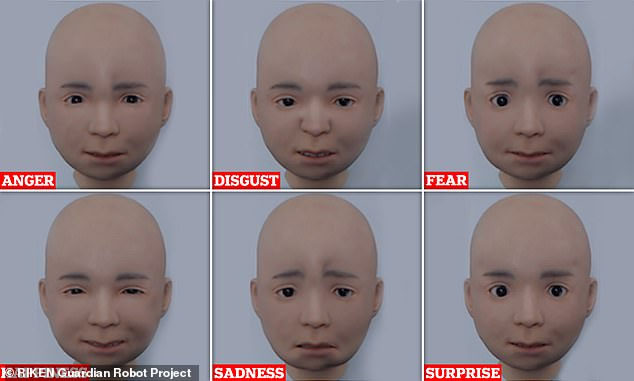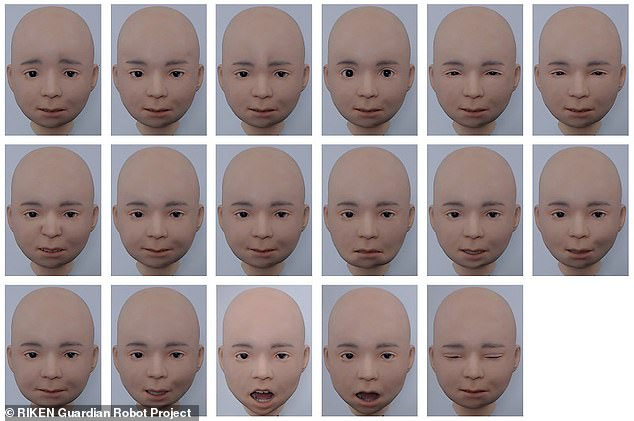Recently, Japanese scientists have developed a child-like robot capable of expressing six basic emotions just like a real human.
According to the Daily Mail (UK), this robot was created by researchers from the RIKEN Robot Guardian Project in Japan.

Nikola can mimic six basic human expressions. (Photo: RIKEN)
Nikola features facial actuators that allow it to express emotions such as happiness, sadness, fear, anger, surprise, and disgust. Although the robot lacks a body, developers are hopeful it will be applied for various purposes in the near future.
Mr. Wataru Sato, the head of the research team, stated: “The robot can communicate with us through emotions. This will be useful in many real-life situations, such as elderly care, and may make people happier.”
Nikola’s face is equipped with 29 pneumatic actuators that control the movement of artificial muscles. Additionally, there are six actuators used to control the movement of the head and eyes. These actuators are powered by air pressure. The research team indicated that this technology allows for smoother and more fluid movements.
The scientists utilized a coding system known as the Facial Action Coding System (FACS). This system has previously enabled researchers to identify subtle movements on the robot’s face, such as cheek raises and lip pursing.
To determine if people could accurately recognize the robot’s facial expressions, the researchers conducted an experiment where a group of individuals observed Nikola displaying the six emotions. They found that participants could recognize these six emotions, although with varying degrees of accuracy.
The researchers explained: “Due to Nikola’s silicone skin being less elastic than human skin and unable to form realistic wrinkles, it is challenging to identify emotions like disgust because the robot cannot wrinkle its nose.”

Nikola’s face includes 29 pneumatic actuators controlling the movement of artificial muscles. (Photo: RIKEN)
Surprisingly, the research team also discovered that the speed of emotional expression affects the perceived authenticity of these expressions. According to the team, for instance, the expression of sadness is slower compared to the expression of surprise.
In the future, researchers believe that Nikola could be applied in various contexts related to social psychology and neuroscience. Mr. Sato mentioned: “Compared to humans, android robots can better control behaviors and facilitate rigorous experimental investigations into human social interactions.”
Meanwhile, in the future, Nikola may perform a range of applications in the real world—at least when this child-like robot has a complete body. The researchers added: “Although Nikola still lacks a body, the ultimate goal of this project is to create an android robot that can assist humans, especially those with physical needs living alone.”
It remains unclear how much the scientists have spent developing Nikola or how much a version of this child-like robot will cost in the future.


















































